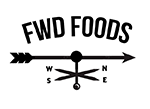First Wave – Impact Production: The Holistic Approach to Food
In the first wave of modern food production, a paradigm shift was observed, moving away from industrialized processes to a more intimate, farm-to-table model. This movement wasn’t just a trend; it was a fundamental rethinking of the relationship between the producer, the consumer, and the food itself. The ethical treatment of animals became a cornerstone of this wave. Free-range chickens and grass-fed cattle were not just marketing terms but reflections of a deep-seated belief in the humane treatment of farm animals.
This wave also heralded a return to basics in food processing. In stark contrast to the highly processed foods that dominated supermarket shelves, this wave emphasized minimal processing to retain the natural essence and nutritional value of ingredients. The mantra was clear: less is more. Freshness, a hallmark of this wave, wasn’t a luxury but a necessity. Fresh ingredients were not just preferred for their taste but celebrated for their connection to the land and season. The locavore movement, which emphasizes eating food grown within a short distance of where one lives, also gained momentum. This was not just a culinary choice but a socio-economic statement, supporting local farmers and economies while reducing the carbon footprint associated with long-distance food transportation.
Second Wave – Impact on Health: The Wellness Revolution
The subsequent wave of food production took a sharp turn inward, focusing on the direct impact of food on individual health. This wave can be seen as a direct response to the rising awareness of lifestyle diseases and a growing health-conscious public. The emphasis was on ‘better for you’ foods – products that were not just tasty but also nutritionally beneficial.
This wave also gave rise to an explosion of dietary-specific products catering to a myriad of health conditions and lifestyle choices – gluten-free, dairy-free, vegan, paleo, keto – the list goes on. Superfoods like quinoa, kale, and acai gained popularity, not just as diet fads but as symbols of a health-centric approach to eating. This era can be seen as an extension of what we saw in the 90’s: a surge in low-calorie, low-fat, and sugar-free products. It wasn’t just about cutting back, it was about smart substitution and innovation in food technology.
The impact of this wave was far-reaching. It transformed the way food was marketed, with health benefits becoming as important as taste. It also influenced public policy, with governments and health organizations around the world initiating campaigns to promote healthy eating habits.
Third Wave – Climate Consciousness and Environmental Impact.
The most recent wave in food production takes a macroscopic view, situating the act of food consumption within the larger context of environmental sustainability. This wave is not just about what we eat but how our eating impacts the planet. The carbon footprint of food production, once a peripheral concern, has become a central issue. This wave asks tough questions: How does the cultivation of this product affect biodiversity? What are the water usage and energy costs associated with it?
Sustainable farming practices, which were once niche, have become mainstream concerns in this wave. The focus has shifted to long-term ecological balance – promoting agricultural practices that maintain soil health, conserve water, and reduce chemical usage. This wave has also sparked interest in alternative sources of protein, such as plant-based meats and insect protein, as more sustainable than traditional livestock farming.
This wave also emphasizes the importance of reducing food waste, a significant contributor to greenhouse gas emissions. The concept of ‘nose-to-tail’ eating, which involves using all parts of an animal to minimize waste, and ‘root-to-stem’ cooking, which applies the same principle to plants, are gaining traction.
A Journey Towards a Sustainable Future
The evolution of food production through these three waves represents a journey towards greater responsibility – responsibility towards our health, our communities, and our planet. Each wave has built upon the lessons of its predecessor, moving us closer to a food system that is sustainable, equitable, and healthful. As we look towards the future, it is clear that the challenges are manifold, but so are the opportunities for innovation and positive change. The continued evolution of our food systems will undoubtedly play a crucial role in shaping a healthier, more sustainable world.





